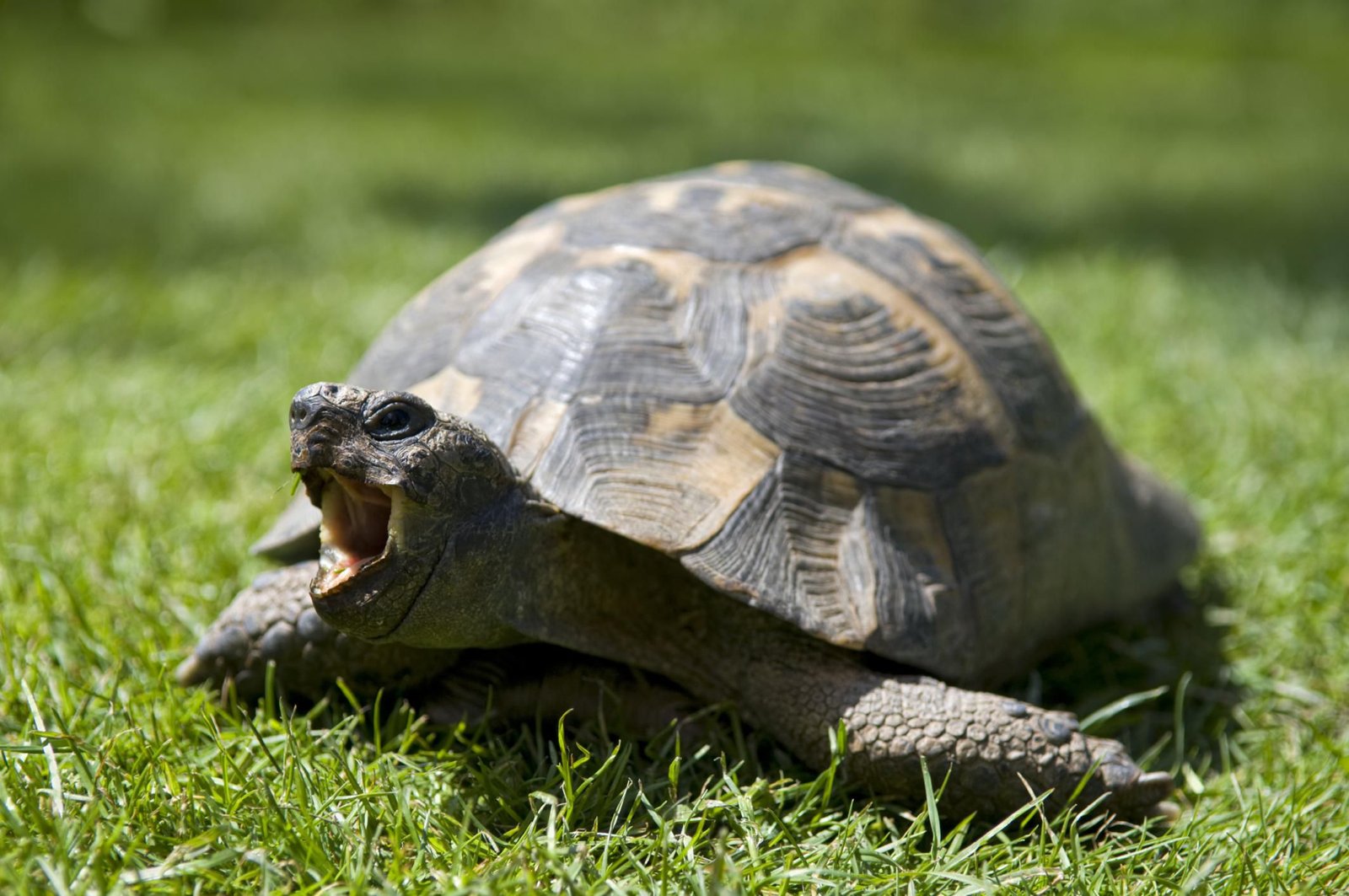Pet tortoises can make interesting pets, but they come with challenges due to their size and dietary habits. It is important to provide them with a varied diet that includes the right amount of roughage and balanced calcium and phosphorus levels.
The enclosure should be carefully monitored for temperature and protection from predators. Tortoises can enjoy being pets and may even seek attention and petting from their owners. Understanding the specific needs of different tortoise species is essential for their proper care and well-being.
This introduction provides an overview of what it takes to care for a pet tortoise and highlights the importance of meeting their dietary and environmental requirements.

Credit: www.walmart.com
1. Introduction To Pet Tortoises
Pet tortoises make interesting pets, although their size and dietary habits can present some challenges. They require a varied diet with attention to roughage and calcium/phosphorus balances. Careful monitoring of enclosures, food intake, and protection from predators is essential for their well-being.
1.1 Types Of Pet Tortoise
When considering getting a pet tortoise, it’s important to familiarize yourself with the different types that are commonly kept as pets. Here are some popular types of pet tortoises:
- Greek tortoise
- Hermann’s tortoise
- African spurred tortoise
- Red-footed tortoise
- Leopard tortoise
- Russian tortoise
Each type of tortoise has its own unique characteristics and care requirements, so it’s essential to choose the right one for your lifestyle and experience level.
1.2 Are Tortoises Good Pets For Beginners?
Many people wonder whether tortoises are suitable pets for beginners. The answer depends on several factors:
- Tortoises have a long lifespan, so be prepared for a long-term commitment.
- They require specific care and living conditions, including the right temperature, humidity, and lighting.
- Tortoises have specific dietary needs, which include a variety of foods and supplements.
- They can take a while to adjust to their new environment and may require regular veterinary check-ups.
Although tortoises can be challenging pets for beginners, with proper research, knowledge, and commitment, they can make rewarding companions.
1.3 What Do Pet Tortoises Need To Know?
Before bringing a tortoise into your life, it’s crucial to understand their specific needs and requirements:
- Tortoises need a spacious and secure enclosure that provides both shelter and adequate space to move around.
- Their enclosure should be equipped with appropriate heating and lighting to mimic their natural habitat.
- They require a balanced diet consisting of leafy greens, vegetables, fruits, and occasional protein sources.
- Tortoises need access to fresh water for drinking and soaking.
- Regular exercise, both indoors and outdoors, is essential for their well-being.
- Tortoises should be protected from predators and extreme weather conditions.
2. Care And Maintenance Of Pet Tortoises
Proper care and maintenance are essential for the well-being of pet tortoises. As a responsible pet owner, it is crucial to understand their unique needs and provide the necessary care to ensure their health and happiness. Here are some key aspects to consider when it comes to the care and maintenance of pet tortoises:
2.1 Feeding And Dietary Habits
Tortoises have specific dietary requirements that must be met to maintain their overall health. A varied and balanced diet is essential for their well-being. Here are a few important points to keep in mind:
- Bold and underline: Provide a quality, varied diet to meet their nutritional needs.
- Ensure they have access to fresh, clean water at all times.
- Bold and underline: Include a good amount of roughage in their diet for proper digestion.
- Monitor their food intake to prevent overfeeding or underfeeding.
- Pay attention to the calcium/phosphorus balance in their food to promote healthy bone growth.
Feeding your pet tortoise with the right foods in the right quantities is crucial for their overall well-being.
2.2 Temperature And Enclosure Management
Creating the ideal environment for your pet tortoise is essential for their physical and mental health. As a cold-blooded reptile, they rely on their environment to regulate their body temperature. Here are some key points to consider:
- Monitor the enclosure’s temperature regularly to ensure it falls within the appropriate range for the specific species of tortoise you have.
- Bold and underline: Provide a warm basking area where they can raise their body temperature.
- Create a cooler area in the enclosure where they can retreat to regulate their temperature.
- Bold and underline: Ensure the enclosure is spacious enough to allow for natural movement and exercise.
- Protect them from extreme weather conditions by providing suitable shelters or indoor enclosures.
By maintaining optimal temperature levels and providing a comfortable enclosure, you can help ensure the well-being of your pet tortoise.
2.3 Interaction And Socializing With Pet Tortoises
While tortoises may not be as interactive as other pets, they still benefit from socialization and attention from their owners. Here are some guidelines to follow for a positive interaction:
- Bold and underline: Handle your tortoise gently and with care to avoid causing stress or injury.
- Allow them to explore their surroundings and provide enrichment activities to stimulate their natural behaviors.
- Bold and underline: Spend time observing and interacting with your pet tortoise to build trust and bond with them.
- Understand their body language and behavior to better respond to their needs and preferences.
- Respect their need for alone time and provide hiding spots in the enclosure for privacy.
Creating a nurturing and interactive environment for your pet tortoise can contribute to their overall well-being and happiness.
3. Common Behaviors And Characteristics Of Pet Tortoises
Discover the common behaviors and characteristics of pet tortoises, including their dietary habits and size considerations. Learn how to provide the proper care for these fascinating reptilian pets.
3.1 Understanding Tortoise Behavior
Tortoises may seem slow-moving and uninterested, but they actually exhibit fascinating behaviors. Understanding these behaviors can help you provide the best care for your pet tortoise. Here are some common behaviors you may observe:- Basking: Tortoises love to bask in the sun, soaking up the warmth to regulate their body temperature.
- Exploring: Despite their reputation for being slow, many tortoises are curious and enjoy exploring their surroundings.
- Hiding: Tortoises often retreat into their shells when they feel threatened or need some alone time.
- Feeding: Tortoises are herbivores and take their time grazing and munching on various greens and vegetables.
- Mating rituals: Male tortoises may engage in mating rituals, which can involve head-bobbing, shell-rattling, and chasing.
3.2 Quirks And Unique Traits Of Different Tortoise Breeds
Just like dogs and cats, different tortoise breeds have their own quirks and unique traits. Here are a few examples of popular tortoise breeds and what sets them apart:| Breed | Quirks and Unique Traits |
|---|---|
| Greek Tortoise | Small size, enjoys burrowing, and thrives in warm climates. |
| Hermann’s Tortoise | Known for their strong personalities, can be territorial, and thrive in semi-arid environments. |
| African Spurred Tortoise | One of the largest tortoise species, requires ample space and a diet high in fiber. |
| Red-footed Tortoise | Distinct red markings on their legs, more active and terrestrial compared to other tortoises. |
| Leopard Tortoise | Named after the beautiful pattern on their shells, known for their long lifespan and herbivorous diet. |
| Russian Tortoise | Can withstand cooler temperatures, enjoys burrowing in the ground, and has a gentle demeanor. |
3.3 Signs Of Sickness Or Health Issues In Pet Tortoises
As a responsible tortoise owner, it’s crucial to be aware of signs that your pet may be experiencing health issues. Look out for these potential red flags:- Loss of appetite: A sudden lack of interest in food may indicate an underlying health problem.
- Lethargy: If your tortoise seems unusually tired or inactive, it could be a sign of illness.
- Shell abnormalities: Soft spots, shell deformities, or discoloration can indicate shell infections or metabolic bone disease.
- Difficulty breathing: Wheezing, gasping, or respiratory noises may suggest a respiratory infection.
- Abnormal stool: Diarrhea, blood in the stool, or noticeable changes in droppings should be addressed promptly.
:strip_icc()/tortoises-as-pets-1237258_final-6a9e2fcac9b348df93ce3353ec427379.jpg)
Credit: www.thesprucepets.com

Credit: www.amazon.com
Frequently Asked Questions Of An Introduction To Pet Tortoises
Are Tortoises Good Pets For Beginners?
Tortoises can be good pets for beginners, but they require careful care and attention. Provide them with a proper enclosure, monitor their food and temperature, protect them from predators, and give them space to roam. Tortoises can even enjoy being petted and seek attention from their owners.
However, their size and dietary needs can present some challenges.
What Do Pet Tortoises Need To Know?
Pet tortoises need proper enclosure temperatures, a varied diet, protection from predators and the elements, and access to natural sunlight. They can enjoy being pets and even ask for attention and petting. However, they may present challenges due to their size and dietary habits.
What To Do When You First Get A Tortoise?
When you first get a tortoise, check the enclosure’s temperatures daily. Monitor their food intake and provide a varied diet. Protect them from predators and elements, and provide natural sunlight when possible. Tortoises can enjoy being pets and may even ask for attention and petting.
Tortoises can make interesting pets, but they can have specific dietary needs and challenges due to their size. Care for them by offering a variety of thoroughly washed foods.
Do Tortoises Like To Be Petted?
Tortoises can enjoy being pets and may even ask for attention and petting. They also like having a lot of food and free space. However, they may vary in behavior depending on the species.
Conclusion
Pet tortoises can make interesting and rewarding pets, despite the challenges they may present. It is important to provide them with a varied diet that meets their nutritional needs and to monitor their enclosure’s temperatures and protection from predators. A properly cared for tortoise can enjoy being a pet, even asking for attention and petting.
Consider these factors when deciding if a tortoise is the right pet for you.

